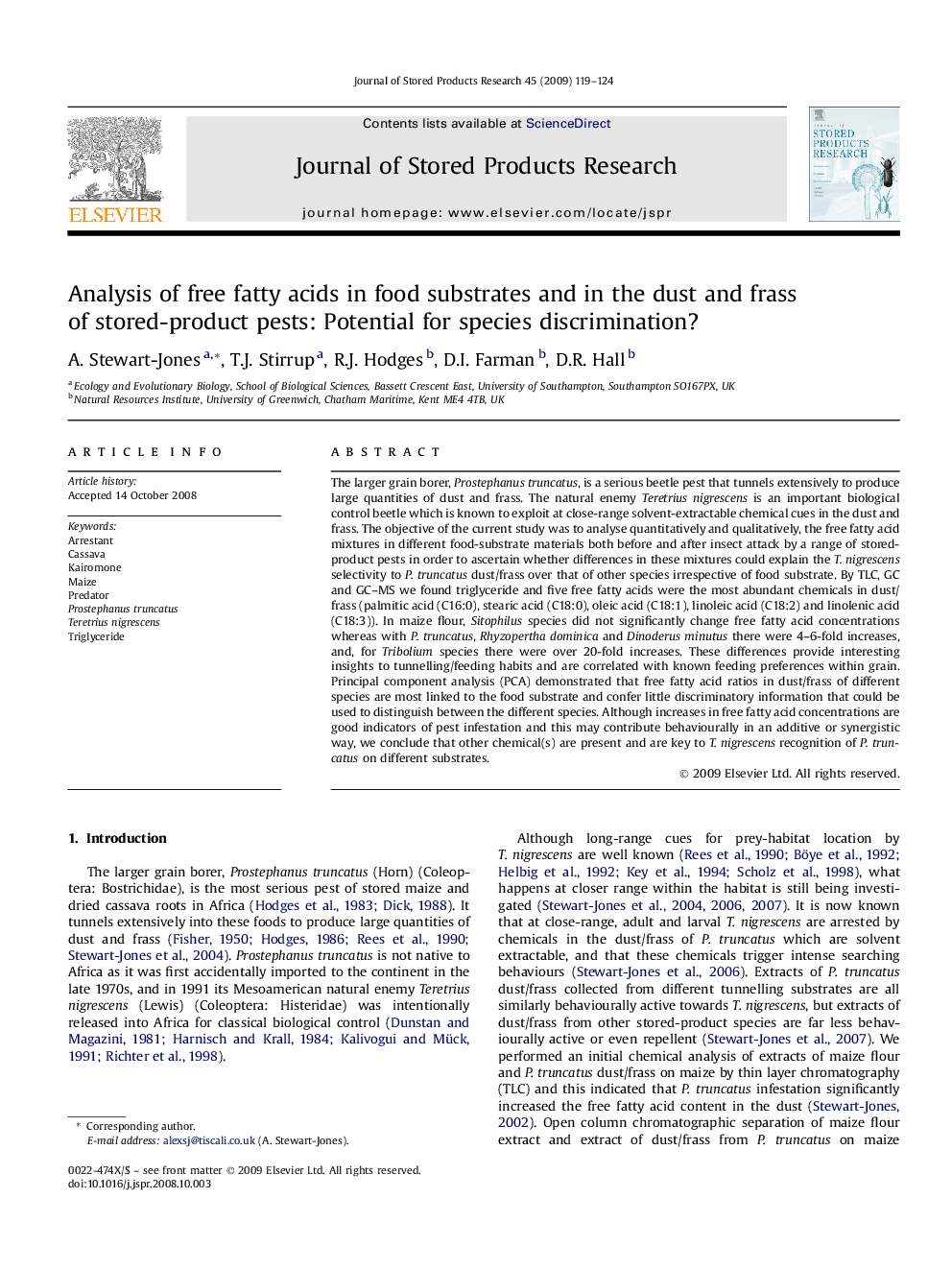| کد مقاله | کد نشریه | سال انتشار | مقاله انگلیسی | نسخه تمام متن |
|---|---|---|---|---|
| 4517387 | 1322541 | 2009 | 6 صفحه PDF | دانلود رایگان |

The larger grain borer, Prostephanus truncatus, is a serious beetle pest that tunnels extensively to produce large quantities of dust and frass. The natural enemy Teretrius nigrescens is an important biological control beetle which is known to exploit at close-range solvent-extractable chemical cues in the dust and frass. The objective of the current study was to analyse quantitatively and qualitatively, the free fatty acid mixtures in different food-substrate materials both before and after insect attack by a range of stored-product pests in order to ascertain whether differences in these mixtures could explain the T. nigrescens selectivity to P. truncatus dust/frass over that of other species irrespective of food substrate. By TLC, GC and GC–MS we found triglyceride and five free fatty acids were the most abundant chemicals in dust/frass (palmitic acid (C16:0), stearic acid (C18:0), oleic acid (C18:1), linoleic acid (C18:2) and linolenic acid (C18:3)). In maize flour, Sitophilus species did not significantly change free fatty acid concentrations whereas with P. truncatus, Rhyzopertha dominica and Dinoderus minutus there were 4–6-fold increases, and, for Tribolium species there were over 20-fold increases. These differences provide interesting insights to tunnelling/feeding habits and are correlated with known feeding preferences within grain. Principal component analysis (PCA) demonstrated that free fatty acid ratios in dust/frass of different species are most linked to the food substrate and confer little discriminatory information that could be used to distinguish between the different species. Although increases in free fatty acid concentrations are good indicators of pest infestation and this may contribute behaviourally in an additive or synergistic way, we conclude that other chemical(s) are present and are key to T. nigrescens recognition of P. truncatus on different substrates.
Journal: Journal of Stored Products Research - Volume 45, Issue 2, April 2009, Pages 119–124